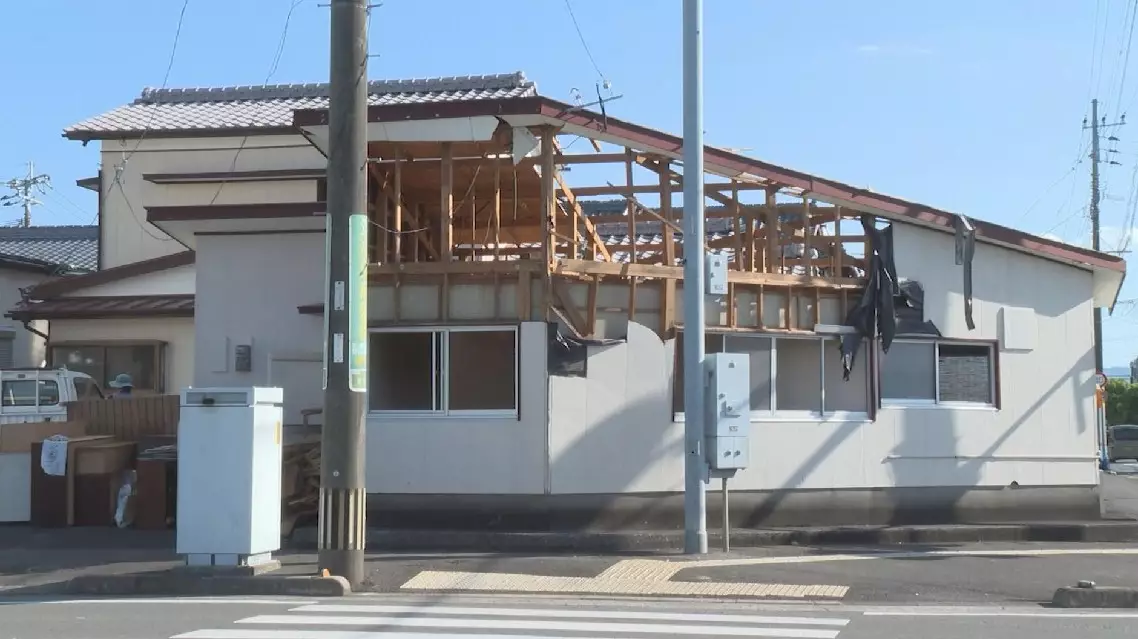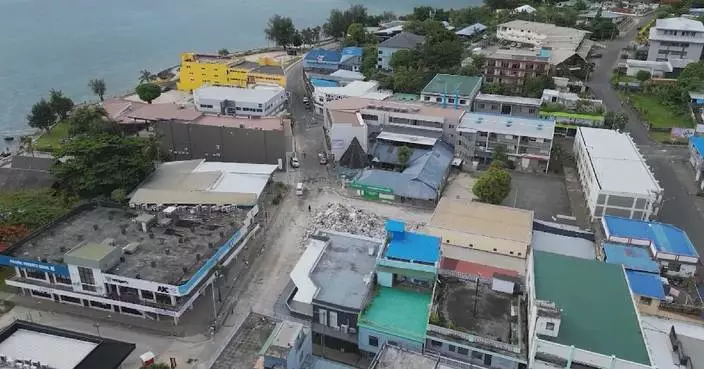Powerful Typhoon Shanshan has wreaked havoc in large swathes of Japan, with southwestern coastal city of Miyazaki being one of the hardest-hit areas.
Shanshan, the 10th typhoon this year, has weakened to a tropical depression since it made landfall in the country’s south-west on Thursday.
In Miyazaki, the Typhoon knocked out power, toppled trees, flooded roads and blew off entirely or partially roofs of hundreds of buildings. To protect themselves from heavy rains, locals have to cover their roofs with blue tarps.
The Shimizu family was cleaning up their damaged houses when a CCTV reporter visited the neighborhood. All their three houses were left in shambles. 87-year-old Masayuki Shimizu, who has lived here for over 50 years, recounted the horrific moments when the typhoon struck at night.
"I heard a loud crash and it was a sound I had never heard before. Then came the sound of glass shattering, with stones flying over. When I went [outside,] I saw that it [the roof] had already been blown away, and the power was knocked out by that time. The noise was extremely loud, and everything in the house was wet," he said.
Shimizu said that his son's house had just been renovated at a significant cost. But now much of the outer wall has fallen off, adding another financial burden for repairs.
"It was just renovated ten days ago. We spent several million yen (about tens of thousands of U.S. dollars), and now everything was destroyed," he said.
Repair costs and future living arrangements are weighing on the family's budget.
"At this age, I'm not really thinking about rebuilding. I need to discuss with the children and grandchildren how to do with the vacant store in front and this house. For now, we'll do emergency repairs and live here temporarily," said the old man. According to data from the local government, Typhoon Shanshan had damaged 750 homes in Miyazaki City as of Saturday, mostly due to strong winds. When normalcy will return for residents remains uncertain.
Typhoon Shanshan is now still causing havoc, with rain and gusts hitting southern Japan.

Typhoon Shanshan damages hundreds of homes in Japan's Miyazaki City
The lineup for the 2025 Spring Festival movie season was officially revealed on Wednesday with six highly anticipated films set to hit the big screens in China on the first day of the Spring Festival on January 29.
The six films -- Creation of the Gods II: Demon Force, Ne Zha 2, Detective Chinatown 1900, Operation Leviathan, Boonie Bears: Future Return, and The Legend of the Condor Heroes: The Great Hero -- span a range of genres and feature impressive creative teams.
Since pre-sales began on Jan 19, advanced sales for the holiday line-up were the fastest ever to reach 100 million yuan (about 13.8 million U.S. dollars).
At a launch ceremony for the Spring Festival movie season, held at the China National Film Museum in Beijing, the cast of each film highlighted the unique selling points of their movie.
"The viewers will not only uncover the hidden points of plot from the first installment of Creation of the Gods, but also get a real sense of the characters and their evolving relationships through a brand new theme," said Wuershan, director of the movie Creation of the Gods II: Demon Force.
Adapted from the classic Chinese martial arts novel by Jin Yong, The Legend of the Condor Heroes: The Great Hero captures the essence of Chinese chivalry with its portrayal of selfless heroism.
described it as a story with stirring heroism.
"The soul-stirring and awe-inspiring heroic spirit conveyed by the film will be touching, memorable and romantic as well," said Tsui Hark, who directed the film.
The animated film Ne Zha 2 continues the adventures of hero Ne Zha -- a beloved Chinese mythological figure -- with a focus on comedy and spectacular visual effects.
Retaining its signature style, the popular detective series Detective Chinatown 1900 promises twists and turns with big production values and glittering special effects.
As China's first film about nuclear submarines, Operation Leviathan presents a broader underwater battlefield and more complex combat scenarios, offering a unique perspective on naval warfare.
The Great Hero -- the last chapter of the "Boonie Bears" sci-fi series -- combines extreme romance and bold imagination to take viewers on a futuristic adventure.
Different discount and subsidy policies for moviegoers during the Spring Festival were also announced at the launch event with local film authorities across the country organizing special events and promotions to encourage cinema visits.
Supporting institutions, including the Industrial and Commercial Bank of China, China UnionPay, Maoyan Entertainment, and Taopiaopia, are expected to provide at least 600 million yuan (about 83 million U.S. dollars) in subsidies for moviegoers during the holiday season.

Six new films set to hit China's big screens on Chinese New Year's Day























































